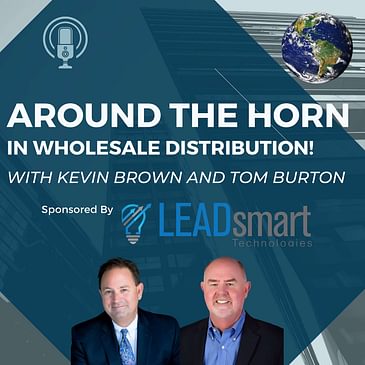According to Reuters, U.S. wholesale inventories fell more than initially thought in January of 2024, which could negatively impact economic growth estimates for the first quarter. Inventories dropped 0.3% instead of dipping 0.1% as estimated last month. At January's sales pace it would take wholesalers 1.36 months to clear shelves, up from 1.34 months in December.
So what does this mean for wholesale manufacturers and distributors? How does it affect your bottom line when it takes longer to turn over your inventory, or longer to get inventory in your warehouse? And what can you do to mitigate the risk and the cost,
On this week's episode, Tom and Kevin and joined by Mike Mortensen, CEO of ARG Industrial, to get deep insights to these issues and more. We also take a look at how risk is becoming the "new normal" for the global ocean shipping industry that handles 80% of global trade, as well as how developments in generative AI could create more rapid change in the workplace and the economy than previous waves of tech advances.
Join the conversation each week on LinkedIn Live.
Want even more insight to the stories we discuss each week? Subscribe to the Around The Horn Newsletter.
You can also hear the podcast and other excellent content on our YouTube Channel.
Follow us on Facebook, Twitter, Instagram, or TikTok.


